On Sept. 18, a panel of students met with board members and administrators to discuss life at SFUAD.
Think About It
posted by Nicholas Beckman
SFUAD rolls out online campus safety training, Think About It, as part of new initiatives and resources for students.
Musical Theater
posted by Nicholas Beckman
The Performing Arts Department’s musical theater workshop, taught by Sarah Wyler, opened Friday May 9 at the Weckesser Studio Theatre with finesse.
Funny Talk
posted by Nicholas Beckman
Mark Feigenbutz is a junior in the Creative Writing Department who has been studying abroad in London for the fall and spring semesters. He is a comedian of sorts.
JUSTICE FOR JEANETTE
posted by Nicholas Beckman
“Don’t let her death be in vain” read the signs of family, friends and concerned citizens who rallied outside the First Judicial District Court April 11 to raise awareness for the fatal shooting of Jeanette Anaya by New Mexico State Police on Nov. 7, 2013.
DOJ Releases APD Findings
posted by Nicholas Beckman
The Department of Justice releases the long-awaited results of its investigation into the Albuquerque Police Department.
Hamilton Turner Confesses
posted by Nicholas Beckman
Hamilton Turner discusses directing the Performing Arts Department’s new student-run show: Confessional, Small Craft Warnings.
Hundreds protest ABQ shooting of James Boyd
posted by Nicholas Beckman
Jackalope Magazine covers the protests over the Albuquerque Police Department recent shooting of a homeless man.
Gonzales Inauguration
posted by Nicholas Beckman
On March 10, SFUAD’s Greer Garson Theater hosted the City of Santa Fe mayoral inauguration of newly elected mayor Javier Gonzales, along with city councilors, following the March 4 municipal election.
Oscar Night
posted by Nicholas Beckman
Red carpet? Check. Hors d’oeuvres? Check. Movies? Check. A look at SFUAD’s Oscar night, held on campus March 2.
JORY SPEAKS
posted by Nicholas Beckman
SFUAD Performing Arts Department faculty Jon Jory discusses his life in theater and the upcoming Dangerous Liaisons performance he directed.
Justice for Turkey
posted by Nicholas Beckman
Akkavuk hosted a meeting in King Hall lobby on Feb 17 to spread awareness about the deaths and mistreatment of Korkmaz and other Turkish citizens. She began the meeting by introducing herself and the other eight Turkish students currently studying at SFUAD, all of whom have personally been a part of the riots.
Directing Studi
posted by Nicholas Beckman
“It must be a dictatorial role,” actor Wes Studi says of directing, during a Feb. 5 visit to Hank Rogerson’s directing class.
Solid Gold Clit
posted by Nicholas Beckman
If you’ve walked around campus in the past week, you may have seen a string of gold-lettered graffiti tags reading “SOLID GOLD CLIT” on various buildings and structures. A movement started by artist Sophia Wallace, the “SGC” tags themselves(the most “controversial” of which were on the Shepard Fairey mural on the quad) were spread around campus by an unknown person(s). On Jan. 19, a community fine of $250 was imposed on every resident living on campus. Both the tagging and the fine soon sparked strong responses on the Student Life Facebook page. Initially, the SFUAD student life Facebook page lit up with frustrated students voicing their concern with the fine. Eventually, the comments turned bitter over the entire situation, with some students calling out their peers and staff members with rather heavy and hateful language. “People were running around campus trying to figure out who it was and people got really nasty on the Facebook page in terms of body-shaming (people saying clits,[which are] something as natural as an elbow, are dirty and inappropriate),” said Katie Collins via email. Collins, a sophomore film student, participated in Wallace’s discussion when the artist visited last semester. Once Wallace became aware of the situation, she posted a statement in support of the students to her Tumblr and Facebook page. In an email interview, Wallace told Jackalope that “There is a wonderful opportunity for SFUAD as an institution to be at the forefront…Whoever did the tagging put something into the public discourse that the entire society is telling them from a young age should never, ever be spoken of”…“Imagine if the ways your genitals are spoken of, and frequently are, almost exclusively to humiliate and shame. What is happening right now at SFUAD is powerful. I am excited to...
Taking it in at IAC’s Gift Auction
posted by Nicholas Beckman
Ranging from surreal photography to blind contour drawings of cute puppies, the pieces on the wall at IAC’s Gift Auction flowed seamlessly into the next, even though they were all made for reasons entirely personal to the artists.
Drum, Sing, Dance
posted by Nicholas Beckman
The African Drum Ensemble lead by Fred Simpson transported the audience in the O’Shaughnessy Performance Space.
Gift Festival
posted by Nicholas Beckman
The Interdisciplinary Arts Collective (IAC) at Santa Fe University of Art and Design puts on the Gift Music and Art Festival Nov. 8-9.
Shrouds
posted by Nicholas Beckman
“How do you photograph the disappeared?” Erika Diettes posed this question to herself when planning out her photographic project, Sudarios. The disappeared in her case were the victims of violent attacks on Columbian citizens by the guerrilla warfare that has plagued their country over the past 60 years. Her final execution of this rather intense and emotionally exhausting subject matter seemed so intentional and precise that one hardly questions the story behind it. Displayed at the Immaculate Heart of Mary Chapel, due to the sacred and pristine nature of Catholic churches, Diettes aligned 16 silk-screen photographic prints of women’s faces, all in black and white. The prints were hung from the ceiling and arranged symmetrically, allowing the pictures to blend together from certain angles and come together as a whole when viewed from the center. Diettes interviewed and photographed the victims’ family members—all of whom were women in the project’s final draft—at each individual’s exact moment of horror. During interviews that spanned up to three hours in duration, Diettes had a therapist sit down with victims and guide them through the atrocities they had witnessed firsthand. Although Diettes hadn’t originally planned to only use female subjects, as she gathered interviews and looked at the photographs, she realized that the emotion drawn from the viewer looking at a woman’s face who has experienced a traumatic event, is similar to that of a mother’s loss of her son. This loss of love, she said, is how she wants the viewer to feel while walking past the photographs. According to Diettes, the pictures she has displayed were at the moment in the interview that the subject couldn’t open their eyes. She felt that this moment where loss has been established, but not yet accepted, is the key to giving the disappeared...
Harvest Season
posted by Nicholas Beckman
“We didn’t want to curate something that seemed like an exhibition,” Luke Dorman explained in defense of his process curating Harvest, the studio art department’s 2nd annual juried art show. Dorman, along with Kelsy Waggaman, both graduates of the College of Santa Fe, were selected to judge and curate Harvest. On Thursday, Oct. 17, the two sat down for an open talk with anyone interested in learning more about their approach to the show. “The exhibition of the rejects,” or Salon de Refuses, is the first cluster of artwork seen when stepping into Fine Arts Gallery in the Southwest Annex. The salon, which was located in the rear of the exhibition during last year’s show, presents all of the works that were submitted to Harvest, but not accepted. The walls are filled with vibrant pieces of each artist’s individual talent, differing in both mediums and subject matter, but aesthetically stimulating when packed so closely together. They fool you into thinking that this is the show you came to see and, judging by the placement and variety in artwork, it is not that much of a stretch. You begin to realize then, after moving a little further into the room, that the selections that have been individually chosen and praised by the jurors are yet to come. The focus shifts from everything at once to one at a time. The 12 pieces selected were given room to breathe between one another with not a single exhibit resembling the next, yet they were all somehow related. You’ve already been shown the works that didn’t work together with all of the variables that go into a juried show, so you can gather that these pieces are meaningful and are all speaking to you thematically. In response to a student’s question asking if a specific theme was apparent to her and Dorman, Waggaman emphasized the importance of the viewer’s response rather than the jurors’ intent. “Do you see a theme?” she posed. At the Q&A with the jurors, students and faculty members, the majority of questions of which were centered around the purpose of the show, its layout in the space and the jurors’ ideas on juried shows in general. Dorman and Waggaman both agreed that, as former art students, it was difficult for them to say “no” to certain pieces that were truly remarkable by themselves, but didn’t work well next to other pieces. Waggaman described acceptance into the Salon as “a different kind of pride.” She also said that whenever her work wasn’t accepted to shows, she learned the most from those failures and it showed her how to improve her work for the next time. From embroidered shoes/socks on paper plates to a mimetic painting of two feuding foxes, all of the pieces in Harvest and the Salon played together to create a sense of place and acceptance. Both jurors worked independently at first in order to decide which ones they liked personally, then came together and collaborated with each other’s favorites. This bonding of different minds formed a cohesive collection of artwork that somehow worked together—despite lacking a specific...
The Importance of Ernest Withers
posted by Nicholas Beckman
There’s more than just framing and composition that goes into making a photograph powerful. A picture can be aesthetically displeasing, but if the content evokes a feeling from the viewer, whatever that feeling is, it is worthwhile. The current exhibition of Ernest C. Withers’ photographs at Monroe Gallery of Photography follows a bevy of key players in the Civil Rights Movement and, while they are all composed with beauty and care and displayed in a rather minimalistic manner, it also is the story and the people themselves that make the photographs interesting. Withers did not necessarily consider himself an artist. Bigotry and intolerance can be a great motivation to become, as he referred to himself, a “news photographer.” While Martin Luther King Jr., and Malcolm X motivated the African American community to find their voice in the United States, Withers documented them, showing the world their heroes. He captured their character and strength, as well as their humanity, all with the snap of a camera. Born in Memphis, Tenn., Withers’ upbringing was probably very similar to the very people he would go onto document during the peak of the Civil Rights Movement. Trained at the Army School of Photography during WWII, Withers then went on to serves as one of Memphis’s first African American police officers before his career in photography. White walls and black frames bring focus to the work on display at the Monroe gallery. Colorless photographs of an oppressed people do more to the viewer who has even the most basic understanding of the segregation and hatred our own country enforced than a handful of words on a page could ever do. That is why these photos are arranged in the way that they are. An ample amount of space between each picture gives viewers enough time to be intrigued by a stoic photograph of Martin Luther King Jr. and then immediately disgusted by photos of racist persecution, without being overwhelmed. These bare, white walls that consume the black frames allow the pictures inside of these frames to break free and run wild inside the viewer’s mind. “I AM A MAN” reads the signs held by dozens of sanitation workers rallying for solidarity. The viewer is swarmed with text that begs our modern society to ask, “Why should anyone have to defend their existence?” “Don’t buy gas where you can’t use the Rest-Room,” says the bumper sticker on a vehicle that is most-certainly not owned by a black family, who is content with their community’s current views on cohabitation. Withers also documents the musical scene in Memphis, with pictures of James Brown, Aretha Franklin, Al Green and even Elvis— all grounded with the feeling of “we’re changing the world.” The Monroe Gallery is located at 112 Don Gaspar Ave. Ernest Wither’s work will be on display until Nov. 24,...



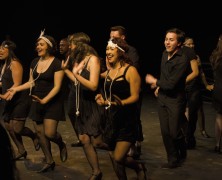
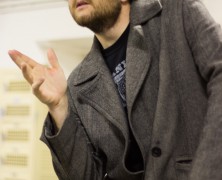
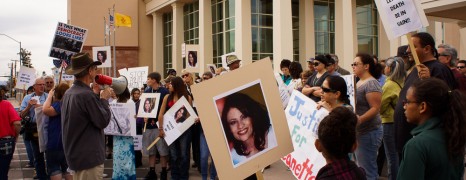

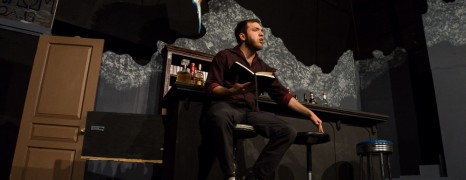

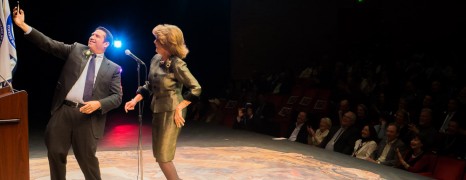

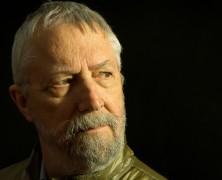

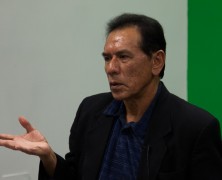


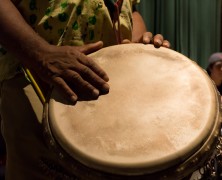
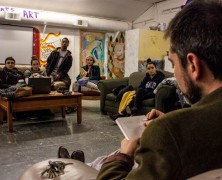
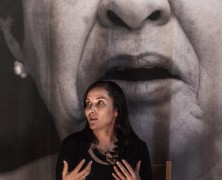

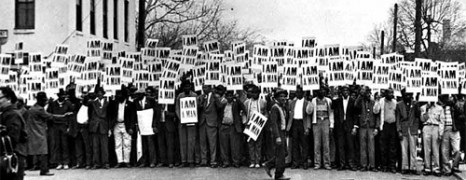
 Jackalope Magazine is the student magazine of Santa Fe University of Art and Design. Building on the interdisciplinary nature of our education, we aim to showcase the talent of our university and character of our city.
Jackalope Magazine is the student magazine of Santa Fe University of Art and Design. Building on the interdisciplinary nature of our education, we aim to showcase the talent of our university and character of our city.
Recent Comments